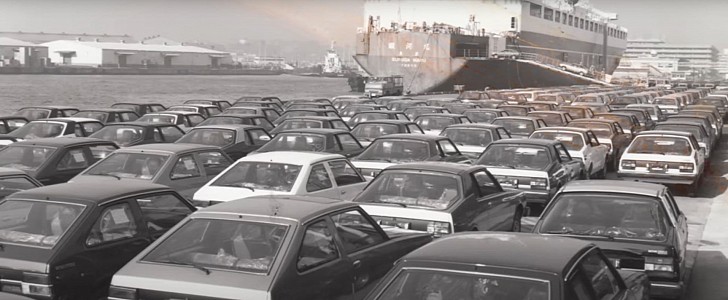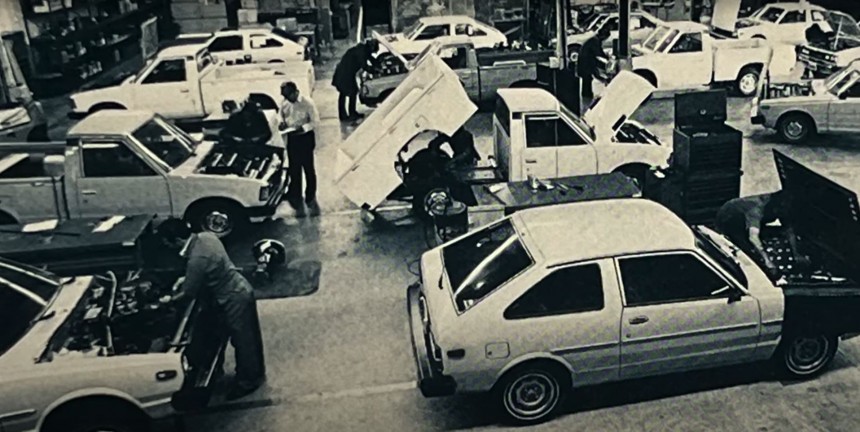Lectra Motors Company did in the 1980s what Tesla successfully managed to achieve in the 21st century thanks to incredible courage, unreal determination, public help, unexpected marketing, and meticulous planning. Their story should be known by anyone that’s ready to accept electric vehicles (EVs) as the common solution to personal transport that doesn’t negatively impact the environment.
Despite the many electrified solutions auto companies explored before oil was discovered to contain a lot of energy and have a versatile, broad usage, the zero-emission alternatives never really took off. That’s mainly why oil became the sole way of powering mobility for the better part of the last century. Now we know things need to change globally. Even if we find ourselves in a pickle, we have to continue with the transition to all-electric cars – regardless of them being battery-electric vehicles (BEVs) or fuel-cell vehicles (FCEVs).
Tesla managed to crack the code of the conservative auto industry. This American company believed in a product and managed to eventually turn it into a lifestyle, a cool choice, a forward-looking option for those that wanted something different. In less than a decade, this entity managed to become a global sensation. Regardless of what Elon Musk does or doesn’t, the brand will continue to have an important place in the history of cars. Let’s just hope they manage to overcome the challenges that are going to come from several places in the upcoming years.
But before Tesla conquered hearts and wallets, Lectra Motors tried to make the all-electric dream a reality. The company was founded in 1979 by mechanical engineer Al Sawyer. He did important work in Nevada in regard to handling nuclear waste with the help of robots. The six-wheel, small machines were electric. That’s where he drew his inspiration from.
A Subaru 360 ended up as a proper testbed for the integrated fully electric drivetrain. But in the end, the Datsun B310 was used as the first production EV of the ‘80s. That’s how the “Lectra Car” appeared. The marketing started to make some sense to people, and the Department of Energy quickly jumped on the opportunity to support a private entity that was ready to show you could survive without oil. Sawyer was heard later saying that they exceeded the expectations that were coming from the government.
In an interview, Lectra’s founder said the investment was conditioned by a time of 0 to 30 mph (0 to 48 kph) of 15 seconds. Their car did it in seven seconds. The other requests were overcome as well. Everything seemed to be heading in the right direction at this point.
The Lectra factory was established in Las Vegas where they built three vehicles – two sedans and a pickup truck. The Lectra 2+2, the Lectra 400, and the Lectra D100 were quickly joined by other models in record time. The Wagon, for example, joined the range to satisfy the needs of American families.
The vehicles had 18 batteries – ten in the back, and eight in the front. The cars were mainly sold to local authorities or companies that needed to have their employees on the move constantly. The Department of Energy helped with gaining a few customers. But the events caught the attention of the big players. Toyota bought a Lectra vehicle, and they imported it to Japan.
Crash tests showed the vehicles were pretty safe for that era, a characteristic that prompted even rental companies to buy some. Lectra’s cars were a part of Thrifty’s fleet. “The type of person that drives this particular car is someone that’s interested in ecology, savings, and also a car of the future that’s here now,” said an ad for them while also praising the running costs that were just one penny per mile.
Lectra sold over 1,000 models before closing its factory in 1982. Al Sawyer co-founded the Las Vegas Electric Vehicle Association in 1998 and he lived until 2012. He remained a militant for transitioning to all-electric cars, even though Lectra didn’t manage to convince Americans it was time to give up on gas and diesel.
Tesla shouldn’t share the same fate. Let’s hope it doesn’t follow Lectra’s path.
Tesla managed to crack the code of the conservative auto industry. This American company believed in a product and managed to eventually turn it into a lifestyle, a cool choice, a forward-looking option for those that wanted something different. In less than a decade, this entity managed to become a global sensation. Regardless of what Elon Musk does or doesn’t, the brand will continue to have an important place in the history of cars. Let’s just hope they manage to overcome the challenges that are going to come from several places in the upcoming years.
But before Tesla conquered hearts and wallets, Lectra Motors tried to make the all-electric dream a reality. The company was founded in 1979 by mechanical engineer Al Sawyer. He did important work in Nevada in regard to handling nuclear waste with the help of robots. The six-wheel, small machines were electric. That’s where he drew his inspiration from.
Lectra starts here
As GM did a couple of years before Sawyer, the man took an old Corvair, converted it to run on electricity, and tested it for two years under the X1 name. The point was to prove that cars can run on electricity alone and be driven with no special preparation in advance for the owner.In an interview, Lectra’s founder said the investment was conditioned by a time of 0 to 30 mph (0 to 48 kph) of 15 seconds. Their car did it in seven seconds. The other requests were overcome as well. Everything seemed to be heading in the right direction at this point.
The Lectra factory was established in Las Vegas where they built three vehicles – two sedans and a pickup truck. The Lectra 2+2, the Lectra 400, and the Lectra D100 were quickly joined by other models in record time. The Wagon, for example, joined the range to satisfy the needs of American families.
The vehicles had 18 batteries – ten in the back, and eight in the front. The cars were mainly sold to local authorities or companies that needed to have their employees on the move constantly. The Department of Energy helped with gaining a few customers. But the events caught the attention of the big players. Toyota bought a Lectra vehicle, and they imported it to Japan.
The story ends unexpectedly fast
Lectra didn’t build an experiment. They proved that all-electric vehicles were feasible and that people or companies could’ve used them. The problem, as you may have guessed already, was the range. It was poor. Charging, as well, was a headache. It regularly took over eight hours to gain approximately 50 miles (80 kilometers) of range for the pickup and a little more for the sedans.Lectra sold over 1,000 models before closing its factory in 1982. Al Sawyer co-founded the Las Vegas Electric Vehicle Association in 1998 and he lived until 2012. He remained a militant for transitioning to all-electric cars, even though Lectra didn’t manage to convince Americans it was time to give up on gas and diesel.
Tesla shouldn’t share the same fate. Let’s hope it doesn’t follow Lectra’s path.









